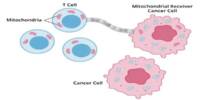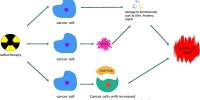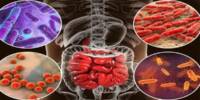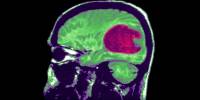Researchers have developed a test to simplify the diagnosis of allergies. Its effectiveness has now been confirmed in clinical samples from children and adolescents suffering from a peanut allergy. The results could fundamentally improve the clinical diagnosis of allergies in future.
Food allergies are a major health problem worldwide. In some countries, up to 10% of the population is affected, mainly young children. Peanut allergy, in particular, is one of the most common diseases and often manifests itself in severe, potentially life-threatening reactions. The stress of food allergies not only affects the individuals concerned, but also has far-reaching consequences for their families, the health system and the food industry. The oral food challenge test, in which people consume the allergen (such as peanut extract) under supervision to test the allergic reaction, is still considered the gold standard in diagnosis. However, the method is complex and carries health risks. The allergen skin prick test and blood test are often not very accurate, which can lead to misdiagnoses and unnecessary food avoidance.
A team of researchers led by Prof. Dr. Alexander Eggel from the Department for BioMedical Research (DBMR) at the University of Bern and the Department of Rheumatology and Immunology, Bern University Hospital, and Prof. Dr. Thomas Kaufmann from the Institute of Pharmacology at the University of Bern, developed an alternative test in 2022. It mimics the allergic reaction in a test tube and thus offers an attractive alternative to standard tests. The researchers from Bern have now investigated the effectiveness of the test on samples from children and adolescents with confirmed peanut allergy and a healthy control group in a clinical study in collaboration with partners from the Hospital for Sick Kids in Toronto, Canada. They were able to show that the new test has a higher diagnostic accuracy than the methods used so far. The study was recently published in the European Journal for Allergy and Clinical Immunology (Allergy).
The cell-based test was easy to carry out and worked perfectly. All samples were measured within two days, which was very fast.
Thomas Kaufmann
Mast cell activation test as appropriate alternative
“The most common food allergies are type I allergies. They develop when the body produces immunoglobulin E (IgE) antibodies in response to substances that are actually harmless (allergens),” explains Alexander Eggel. These antibodies bind to specific receptors on the mast cells, which are immune cells that play an important role in allergic reactions and inflammation. They are mainly located in the tissue, for example, in the intestinal mucosa, and are prepared for and sensitized to the allergen by binding to the antibodies. Upon renewed contact with the allergen, it binds directly to the mast cells loaded with antibodies, activating them and triggering an allergic reaction. ”In the Hoxb8 mast cell activation test (Hoxb8 MAT), which we developed, mast cells grown in the laboratory are brought into contact with blood serum from allergic patients. The mast cells bind the IgE antibodies from the serum and are sensitized by them. We can then stimulate the mast cells with different amounts of the allergens to be tested,” says Eggel. Quantifying the activated mast cells suggests how allergic a patient is to the allergen tested without needing to consume the food.
Higher diagnostic accuracy than standard tests
The study used serum samples from a total of 112 children and adolescents who had already participated in a study in Canada and for whom clear diagnostic data on their peanut allergy status were available. The mast cells cultured in the laboratory were sensitized with their serum and then stimulated with peanut extract. “The cell-based test was easy to carry out and worked perfectly. All samples were measured within two days, which was very fast,” says Thomas Kaufmann. The results showed that a large number of sera from allergic patients exhibited allergen dose-dependent activation, while almost all samples from the non-allergic control subjects did not activate the mast cells. “An exceptionally high diagnostic accuracy of 95% could be calculated from these data,” Eggel adds.
In addition, the data measured in the study were analyzed in direct comparison with other diagnostic methods established at the hospital. It was found that the Hoxb8 MAT test had significantly higher accuracy than the standard measurement of allergen-specific IgE antibodies in the blood or the frequently used skin test. “Comparison with other clinical tests was crucial to determine which of them reflected the patients’ allergic reaction best. The new mast cell activation test has the advantage that it is functional and therefore incorporates many parameters that are important for triggering the allergy,” says Thomas Kaufmann, adding: “The new test is also based on stable blood serum, which can be drawn using simple blood sampling and then stored in the freezer. This eliminates the challenging logistical obstacles that arise with other methods.” The study also showed that the Hoxb8 MAT test leads to less false negative results.
“What has been shown in this study on the diagnosis of peanut allergies can also be applied to other allergies in a simple way. The technology is a perfect example of how basic research from the University of Bern can be brought to the clinical practice, and might ultimately simplify life for patients and physicians,” concludes Eggel.
















